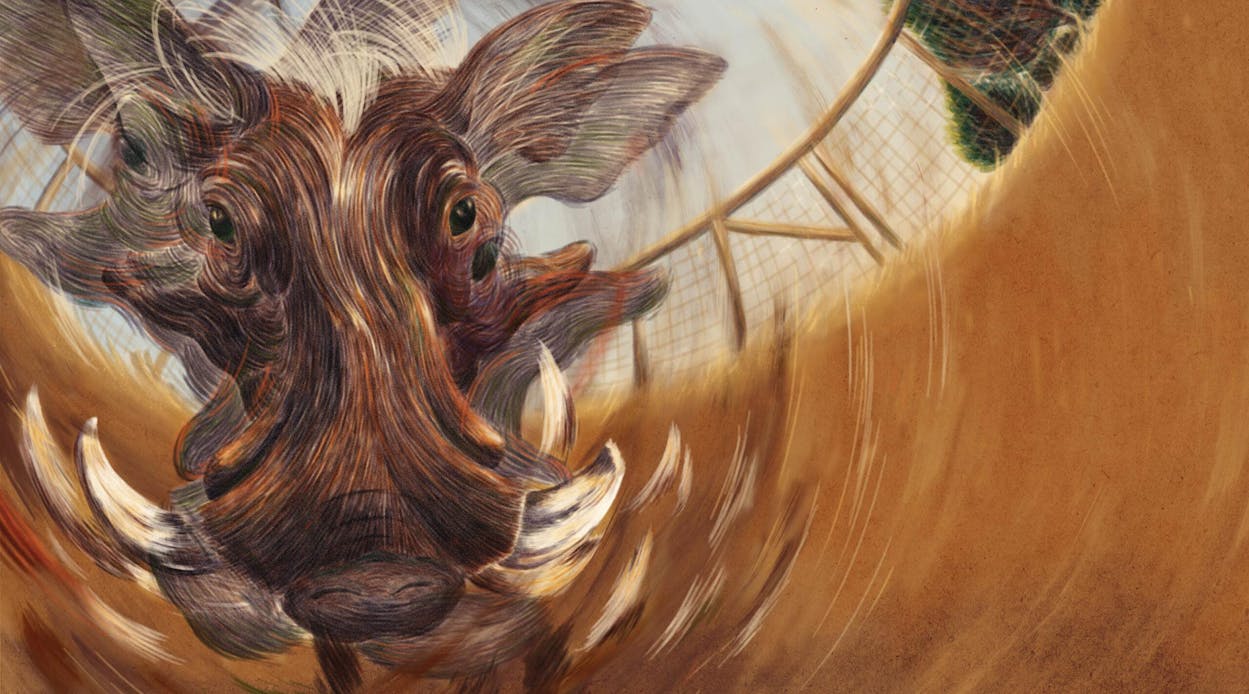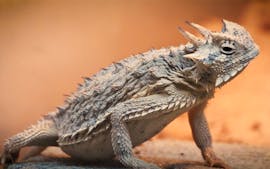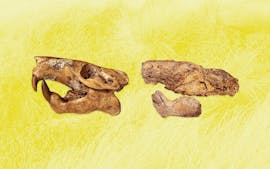He’d come close to dying on multiple occasions, including a few months before his first birthday, when doctors discovered a golf ball–size tumor growing inside his skull. He would go on to spend much of his childhood in and out of hospitals, enduring high-risk brain surgeries and grueling recoveries. Then, in his mid-twenties, he was nearly killed by a cerebral hemorrhage that arrived one night, unleashing the worst pain he’d ever felt. He emerged from that experience reborn, feeling lucky to be alive and convinced that he had been spared by God.
So as he sat in a pool of his own blood on a beautiful October evening in 2022, Austin couldn’t help but acknowledge the morbid absurdity of his current predicament. He’d spent decades conquering brain maladies only to be killed while doing mundane chores on his family’s ranch in the Hill Country. “After all I’d been through,” he said, “I just couldn’t believe that this was how it was going to end.”
As he slumped against a fence in an isolated part of the 130-acre Boerne property and his mangled body began to shut down, Austin’s mind went into overdrive. He thought about his girlfriend, Kennedy, whom he’d never get a chance to marry, and the children he’d never have. He thought about how much he loved his three sisters and his parents and how badly he wished he could thank them for the life they’d provided. He thought about the land stretched out before him, a rustic valley accentuated by crimson and amber foliage that seemed to glitter in the evening light, and realized it had never seemed more beautiful than it did in that moment.
Mostly he thought about the creature that had just used its razor-sharp seven-inch tusks to gore him at least fifteen times. The attack had shredded his lower body and filled his boots with blood, and then left gaping holes in his torso and neck. Had any other animal been responsible, Austin would’ve considered it a random attack. But this was a pet he’d trusted more than any other: his lovable nearly five-year-old warthog, Waylon. It wasn’t just an ambush, as far as Austin was concerned. It was a murderous act of betrayal, one that shattered everything he thought he knew about the deep bond between man and pig. “For years, that animal trusted me every day, and I trusted him,” Austin said. “I put blood, sweat, and tears into his life, and he decided to kill me.”
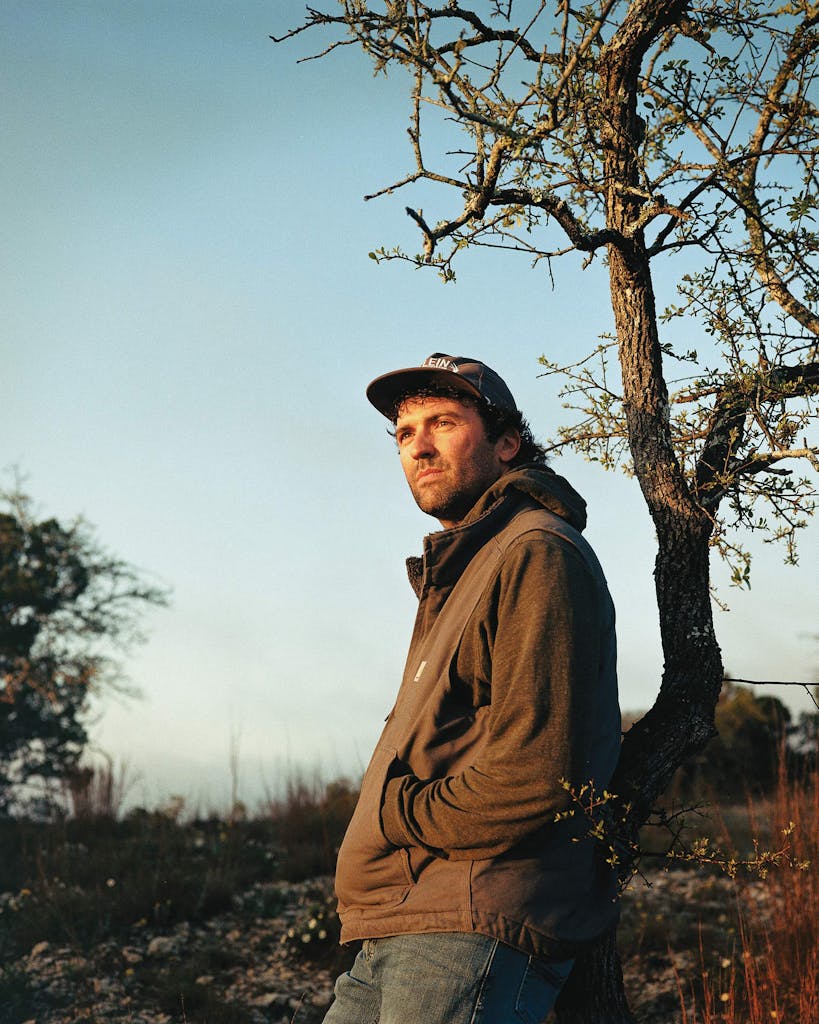
Austin, who spends most days on his own, working with his hands, seems like a throwback to another era. Ruggedly handsome, with a five-o’clock shadow and head full of unkempt brown hair, he favors beaten-up boots and Wrangler jeans and looks like he could’ve stepped out of a seventies Marlboro ad. Though he’s partially paralyzed on his left side from a botched brain surgery decades ago, he has a confident strut and refers to himself as “farm-boy strong.”
When it comes to animals, he reveals a softer side. In his polite Texas twang, the 32-year-old talks lovingly about caring for an antelope or a warthog as matter-of-factly as most people speak about feeding a dog or a cat. He has a wide circle of human friends but an even wider circle of relationships with animals, many of whom he’s given human names, such as Elmer and Susan. “People are so mean to each other for no reason, but animals, they’ve always felt peaceful to me,” he told me as he fixed a fence on the edge of the ranch, keeping one eye on an anxious herd of African kudu apparently upset by the presence of his all-terrain vehicle. “And unlike people, they almost always give back what you put into them.”
Animals have been a part of Austin’s life for as long as he can remember. Austin’s father, Shane, has a career in oil and gas, but his passion since Austin was young has been for his ranch, which he stocked with unusual animals from faraway places. After Austin was born, Shane turned his hobby into a business, breeding and selling exotic animals, typically to buyers in Texas. The family moved to their Hill Country homestead full-time after Austin’s third brain surgery.
Because his medical history meant he faced an increased risk of seizure, Austin needed regular supervision growing up. He wasn’t allowed to play contact sports and had to be careful roughhousing at the swimming pool each summer or attending sleepovers at friends’ homes. He faced limitations his peers didn’t, but he did have access to something that other children lacked: exotic animals. In addition to three dogs, Austin had a pet ostrich and a white-tail and a fallow deer—all of whom followed the little boy around the ranch.
Austin’s father, Shane, spent much of his career working in oil and gas when Austin was young, but his passion was for his ranch, which he stocked with unusual animals from faraway places. After Austin was born, Shane turned his hobby into a business, breeding and selling exotic animals, typically to buyers in Texas. After Austin’s second brain surgery, his parents decided to relocate to their Hill Country homestead full time.
“He was never inside and didn’t like to play video games,” Gail Riley, Austin’s mother, recently recalled. “He wanted to be outside with the animals, hanging out, playing hide-and-seek, learning how to feed and care for them. Austin loved the animals and the animals always seemed to love him.”
But there was one animal that Austin poured more of himself into than any other: Waylon. Their bond formed on a cold December night in 2017, seconds after the tiny warthog took its first breath. The piglet’s mother had died in labor, but Austin immediately assumed her place, cradling the hamster-size infant in one hand and a bottle of milk in the other. He moved the animal into his parents’ home, creating a makeshift nursery out of a plastic container, hay, and baby blankets. Eventually, as the weather outside warmed, Austin built the warthog a small wooden house beside his parents’ home, where the pig was able to spend his days gaining strength and roughhousing with the family’s bulldog. Austin decided to name the rambunctious warthog as an homage to another unruly figure, outlaw country legend Waylon Jennings.


Always eager for his owner’s company, Waylon enjoyed falling asleep on Austin’s chest after feedings. He loved red apples, rough belly scratches, and tender massages on his hardened, bony snout. Before long, the pig and the brawny farm boy were inseparable. “I just kinda became his parent—his dad, really,” Austin said. “Early on, I’d take him with me through the drive-through at Whataburger, and he’d sit in the front seat, happy as can be.”
Waylon soon grew to be “two hundred fifty pounds of pure protein,” as Austin likes to say—more than an average-sized NFL linebacker. By then, Austin had moved him to a large pen a few hundred yards away from the family home. On particularly beautiful days, Austin liked to lie on the ground in the enclosure, listening to sports radio and watching the clouds pass by. Inevitably, Waylon would lie down beside him, gingerly resting his enormous, wart-covered head on Austin’s thigh. They could remain that way for hours at a time.
Pigs, as any experienced livestock handler will tell you, are usually the most intelligent animals on a ranch, and Waylon was no exception. He could follow basic commands and knew his name. When Austin wasn’t paying attention, Waylon enjoyed digging his snout into his owner’s back pocket and grabbing hold of a pair of pliers that Austin always carried with him. Instead of giving the tool back, Waylon would run to the other side of the pen and play keep-away for as long as Austin would chase after him. “He loved being a little pain in the butt,” Austin recalled. “But in the end, we had an understanding, and he never showed one sign of aggression.”
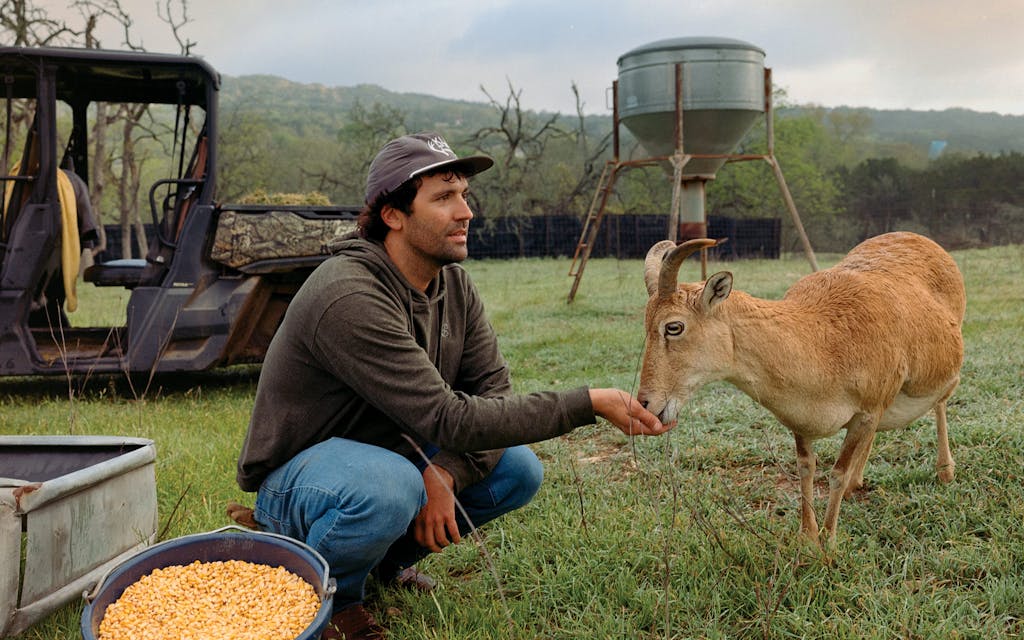
The notion that a warthog could be a friendly sidekick was popularized by Pumbaa, the lovable character in The Lion King known for belting the phrase “hakuna matata,” a Swahili expression meaning “no worries.” On the ruthless African savanna, however, warthogs exist in an almost perpetual state of danger. Their wariness, and quick trigger, has helped to turn them into formidable opponents for some of the world’s most fearsome predators. Adult warthogs can reach speeds of greater than thirty miles per hour. Even when caught by a lion or leopard, the pigs can be hard to kill, because they fight back with knifelike lower tusks, which protrude from muscular jaws like blades on a scythed chariot. They are known for being resourceful. Warthogs that live near human hunters adjust their behavior accordingly, trading their daytime foraging for nighttime outings. Their combination of ruggedness and adaptability partly explains why, unlike so many other African megafauna, warthogs are not endangered.
Nearly nine thousand miles away, on ranches in Central and South Texas, they’re becoming more popular as pets and as hunting targets. Like their European cousin the feral hog, they are prized by hunters for their delectable meat and the challenge involved in acquiring it. For those who keep them, meanwhile, warthogs are low-maintenance exotic pets. Some have escaped captivity and begun to breed in the Texas wild. Despite their menacing appearance and deadly hardware, they don’t usually display aggression toward humans.
Experts say a reputation for docility can be the very quality that makes a particular animal dangerous. Wild-pig behavior isn’t easy to predict, said Tina Cloutier Barbour, associate vice president of animal care and welfare at the Dallas Zoo, which has four African warthogs in its Giants of the Savanna habitat. Unlike domestic animals, which have been bred to remain docile, wild animals are capable of dramatic shifts in behavior, even when they appear tame. At the Dallas Zoo, personnel never encounter the adult beasts unguarded but instead practice “protective contact,” a form of interaction that ensures there is always a physical barrier, such as wire mesh, between human and animal.
It’s tempting to anthropomorphize wild creatures, Cloutier Barbour said—to think that a long-standing bond between an animal and a human has the power to override deeply held instincts. But that’s wishful thinking. “Warthogs aren’t predators, so they don’t necessarily seek out fights, but if they do feel threatened, they’ll use their speed and their agility and their tusks to defend themselves quite spectacularly,” she said.
Low to the ground and deft, the animal is capable of thrashing its head back and forth at a rate that can be hard for the human eye to register. Adding to the terror, a warthog goring isn’t a clean form of penetrative trauma. The tusks’ hooked shape ensures that they cause even more damage coming out than they do going in. Asked what she’d tell someone planning to add a warthog to a private collection, Cloutier Barbour offered a simple piece of advice: “Don’t do it.”
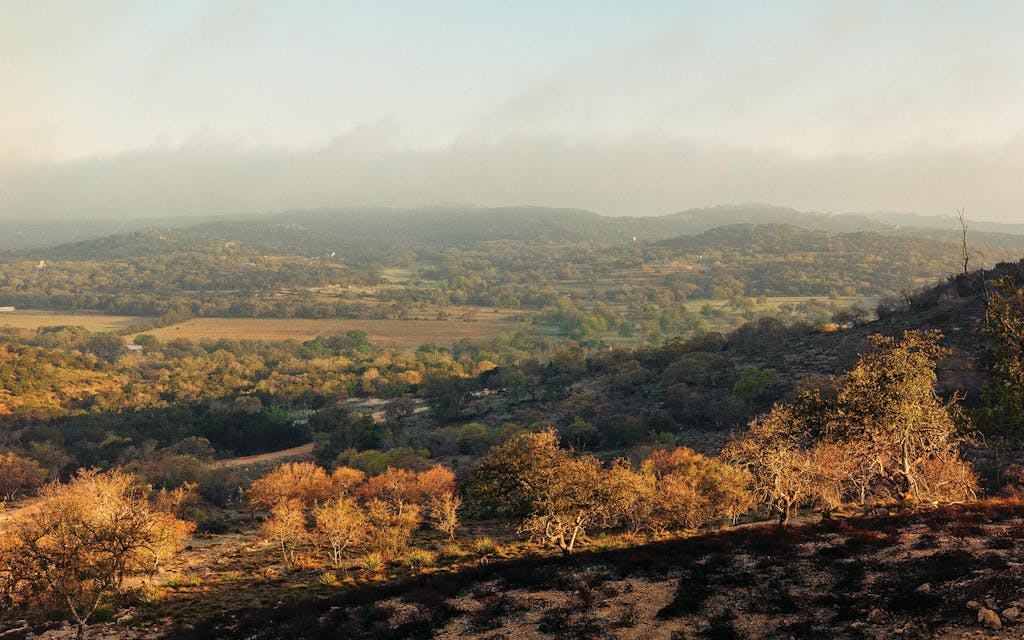
After particularly brutal days at the ranch, whether he’s laboring through freezing weather or has spent hours corralling an unruly animal, Austin likes to sum up his struggle with a single, semiplayful expression: “Things got ‘western.’ ” Austin says he reserves the term—a rhetorical tribute to the rugged cowboy culture that so many rural Texans still embrace—for moments when “s— hits the fan.”
The most western five minutes in his life began without much warning. Waylon had appeared to be his typical friendly self that October day at his dinnertime. He greeted Austin at the front gate, happily accepted some back scratches, and trotted beside him as the two walked to a nearby feeding trough. About twenty minutes after he’d arrived, Austin had just finished feeding Daisy, a potbellied pig he’s owned since she was a piglet, in an adjacent pen. He reentered the warthog enclosure and was walking toward his all-terrain vehicle, parked at the gate.
Suddenly his right leg crumpled behind him and he found himself tumbling forward, landing some fifteen feet away. As Austin gathered his bearings, Waylon’s bulky, gray head emerged from a swirling cloud of dust near his feet. Before Austin could stand up and run, Waylon thrust his face between the rancher’s lower legs and began violently swinging his tusks back and forth. One tusk stabbed Austin twice in the right calf and the other once in the left calf. His right leg was gashed from the knee to the upper thigh, an injury so wide that Austin was later able to put his hand inside it. He remembers the sensation of cool air hitting warm muscle and the realization that blood was pouring out of his jeans and filling his boots. Austin knew his parents were almost certainly eating dinner indoors a quarter mile away and nearby ranchers were likely too far away to hear his cries. He screamed anyway.
For a split second, Austin thought the incident might come to an abrupt end, that Waylon had merely decided to deliver a forceful message—“This is my pen and I’m the man around here now!”—in the only way he knew. But a momentary glimpse of the warthog’s narrowed, rage-filled eyes dispelled that notion. As Austin attempted to scoot backward, he realized that Waylon wasn’t stopping. The warthog was barreling forward, attempting to pin his owner to the ground. “He was in murder mode,” Austin said.
Before Austin could fight back, Waylon hooked his owner four more times in the upper left leg and genitals. Several more stab wounds to his upper right leg followed in rapid succession. Reflexively, Austin attempted to gouge out the warthog’s eyes, but he was blocked by bony facial armor. Austin grabbed on to Waylon’s tusks instead, slicing open his wrist. After three more gashes in his abdomen, Austin attempted to put Waylon in a headlock. But the animal jerked upward, plunging his tusk into Austin’s voice box, leaving a quarter-size hole in his neck from which a piece of an artery dangled like a grisly necklace. The blow knocked him onto his back, leaving his entire body exposed to the rampaging boar.
Somehow, when he needed it most, Austin caught a break. Lying on his back and bleeding out, he may have looked dead to Waylon. The warthog relented, momentarily. Pumped full of adrenaline, Austin staggered to his feet and clambered halfway up an eight-foot fence using a foothold. It would take five tries to swing his body over the top. Once outside the pen, Austin made a disheartening discovery: his phone had fallen out of his back pocket during the attack. Afraid he’d lose consciousness soon, and with no other way to summon help, Austin realized his survival depended upon his reentering the pen with the beast and crossing twenty feet of blood-soaked dirt to retrieve his phone and call for help, all without Waylon noticing. “I’ve been through a lot of physical trauma in my life, and I’ve learned that I’m not the kind of person who gives up without fighting,” Austin said. “Kill me, fine—but I’m gonna fight.”
Once Waylon had trotted a little way in the other direction, Austin seized his opportunity. After climbing down the fence, he dragged himself over to his phone and then stumbled to a nearby gate. Steadying his legs and trying not to panic, he struggled to open two latches as Waylon circled back around and started charging. Slipping past with moments to spare, Austin collapsed on the ground as the warthog lunged at him from the other side of the fence, threatening to break through. “He almost looked like he was possessed,” Austin recalled. “Like he’d turned evil.”
Austin knew his survival was far from assured. His service rarely worked near the back of Waylon’s pen, but on this day he was shocked to find a single bar of coverage. It felt like a miracle. When his dad picked up the phone moments later, Austin told him he was “bleeding out.” Shane knew his son wasn’t joking or being dramatic. Like most ranchers who work closely with livestock, Austin had been bitten, poked, and cut too many times to count. Shane knew his son—who preferred to wrap a paper towel and some electrical tape around a wound and then go about his business—was not one to fuss over injuries. Shane told him to sit tight.


Before Austin hung up the phone, he told his parents how much he loved them. They’d always been there for him, he said, and his rapidly approaching demise wasn’t their fault. He could hear his mother’s screams from inside the family home a quarter mile away, followed by the screech of his father’s Suburban peeling out of the driveway. If he could remain conscious a little bit longer, he told himself, he might be able to say goodbye to both of them in person.
By the time he made it to the pen, Shane felt like he’d walked into a gruesome crime scene. His first instinct was to push the tissue back inside Austin’s body, as if trying to put his son back together. “It was horrible,” Shane said. “I just knew I needed to get him to the hospital as soon as possible.”
As Shane got him into his SUV, Austin was beginning to lose feeling in his hands and feet, a sign that his body was going into shock. Emergency responders had instructed the Rileys to wait for their arrival, but Shane felt there wasn’t enough time. He raced toward Interstate 10. At a rendezvous point, paramedics informed the Rileys that they wouldn’t be able to ride in the ambulance with their son. His condition was too serious. They told him they loved him and urged him to keep fighting.
Gail, who had sped to meet the paramedics in a separate vehicle, dropped to her knees in the middle of the street, overcome by the realization that she might never see her son alive again. An officer from the local sheriff’s department helped her out of the road, worried she’d be hit by a vehicle.
Shane knew Austin had already cheated death multiple times in his young life. He prayed to God, asking for another miracle. “Austin is special,” he said. “And everyone who knows Austin knows how tough he is.”
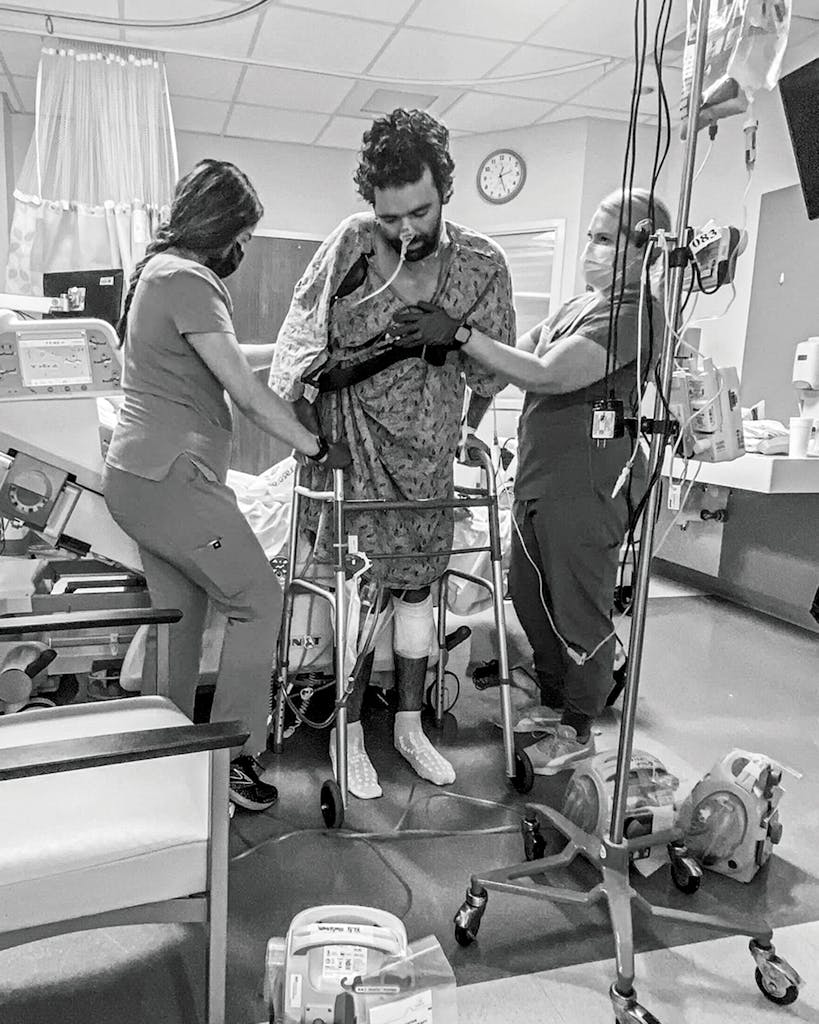
Doctors would later tell the Riley family that by the time Austin reached University Hospital in San Antonio, thirty minutes away, he’d lost nearly half his blood; much more, they said, and he would have died. Even more shocking was that Waylon’s tusks came within millimeters of severing multiple arteries. It would take doctors eleven surgeries to repair the damage to Austin’s body. Though the official count stands at fifteen, neither Austin nor his doctors could be entirely sure of exactly how many times Waylon gored his owner. Some wounds were just too messy for them to be certain.
There’s no formula for surviving a horrific animal attack. There’s even less of a blueprint for getting over an attack in which the victim cared deeply about the attacker. Of all Austin’s many recoveries over his lifetime, this one has been the hardest. For months after the attack, as he healed and worked around the ranch, which is still home to about seventy exotic animals, Austin couldn’t drive past Waylon’s old pen, much less set foot inside it, without reliving the terror. “Still, to this day, when I close my eyes I can see his face covered in my blood,” he said. “I can’t forget his eyes, the way they were locked in to kill.”
More than a year after the attack, Riley has no idea what caused his favorite animal to turn on him. They’d both been in the pen earlier that day, and nothing seemed out of the ordinary. Waylon’s penmate, an easygoing female warthog named Peaches, wasn’t in heat and Waylon wasn’t being cornered when he attacked, nor did he appear to be guarding his food.
Extensive therapy has helped Austin work through traumatic memories and flashbacks. A part of him now feels grateful for what happened. He frequently thanks God that Waylon ambushed him instead of one of his family members. He credits the attack with bringing him closer to Kennedy, who at the time had been his girlfriend for three months and whom he hopes to someday marry. He is also grateful that he didn’t stop fighting, not just because he gave himself another shot at life but because—in a twisted, Texas-warrior sort of way—he survived an encounter with an animal that is built to battle lions. How many of us can say that?
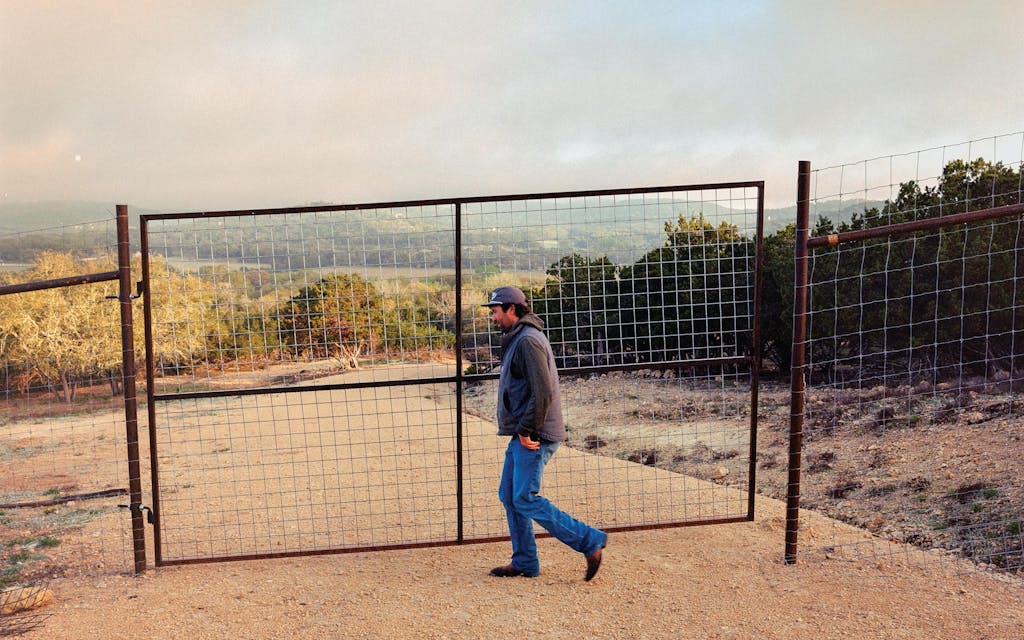
But Austin also knows his glory has come at a terrible cost. His mother is tormented by visions of her son being gored to death. His father blames himself for introducing his son to warthogs years earlier. “We made a mistake and almost paid dearly for it,” Shane told me recently at the ranch, holding back tears.
The night of the attack, Austin’s parents asked an exotic-animal broker who worked with Austin to kill Waylon. Afterward, Waylon’s head was cut off and sent to a lab so he could be tested for rabies. The results came back negative. His slaughter was partly an act of revenge but also an acknowledgment that the warthog could never be allowed around humans again. Shane and Gail deleted all photos of the animal from their phones. Unwilling to be in the presence of another warthog, Austin had Peaches relocated to another ranch.
Austin now walks through the warthogs’ former pen a few times each day to feed Daisy, the potbellied pig. During our last meeting, he showed me his phone, where he’d saved hundreds of images and videos of Waylon. He told me it had been a while, but he had finally found himself able to look at some of them.
Gradually feelings of shock and betrayal are being replaced by acceptance and understanding, he explained. As we looked at sweet pictures of the hog and his owner trading nuzzles and belly scratches, I asked Austin if he thinks Waylon regretted attacking him before he was killed. He went silent for a few seconds before responding. “I don’t think it was Waylon who attacked me,” he said. “I was attacked by a warthog.”
This article appeared in the May 2024 issue of Texas Monthly with the headline “A Boy and His Hog.” It originally published online on February 7, 2024, and has since been updated. Subscribe today.
